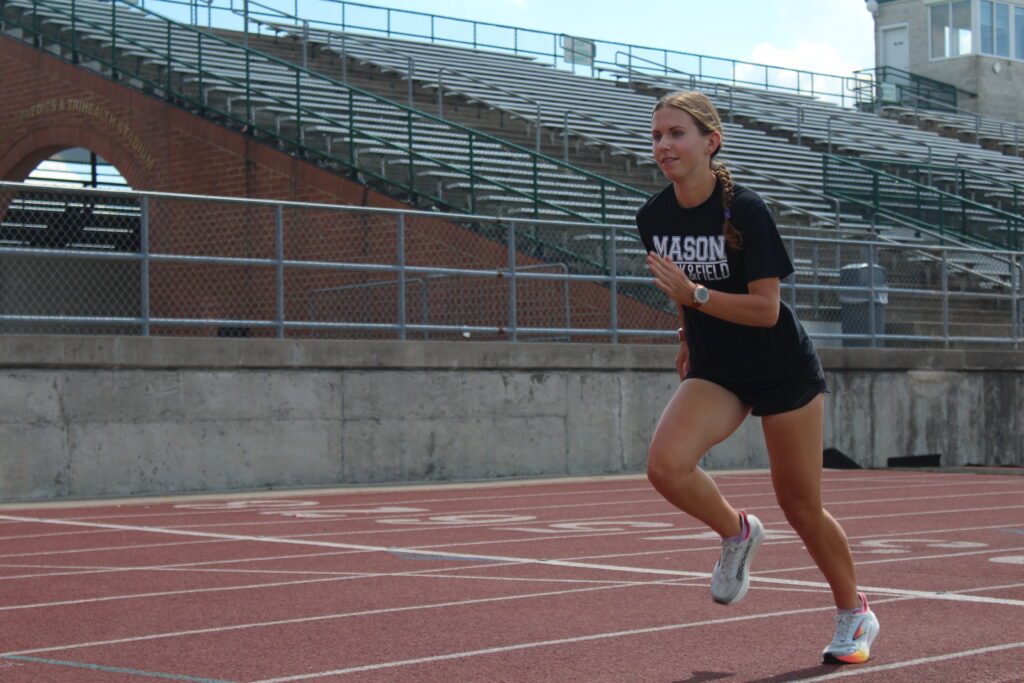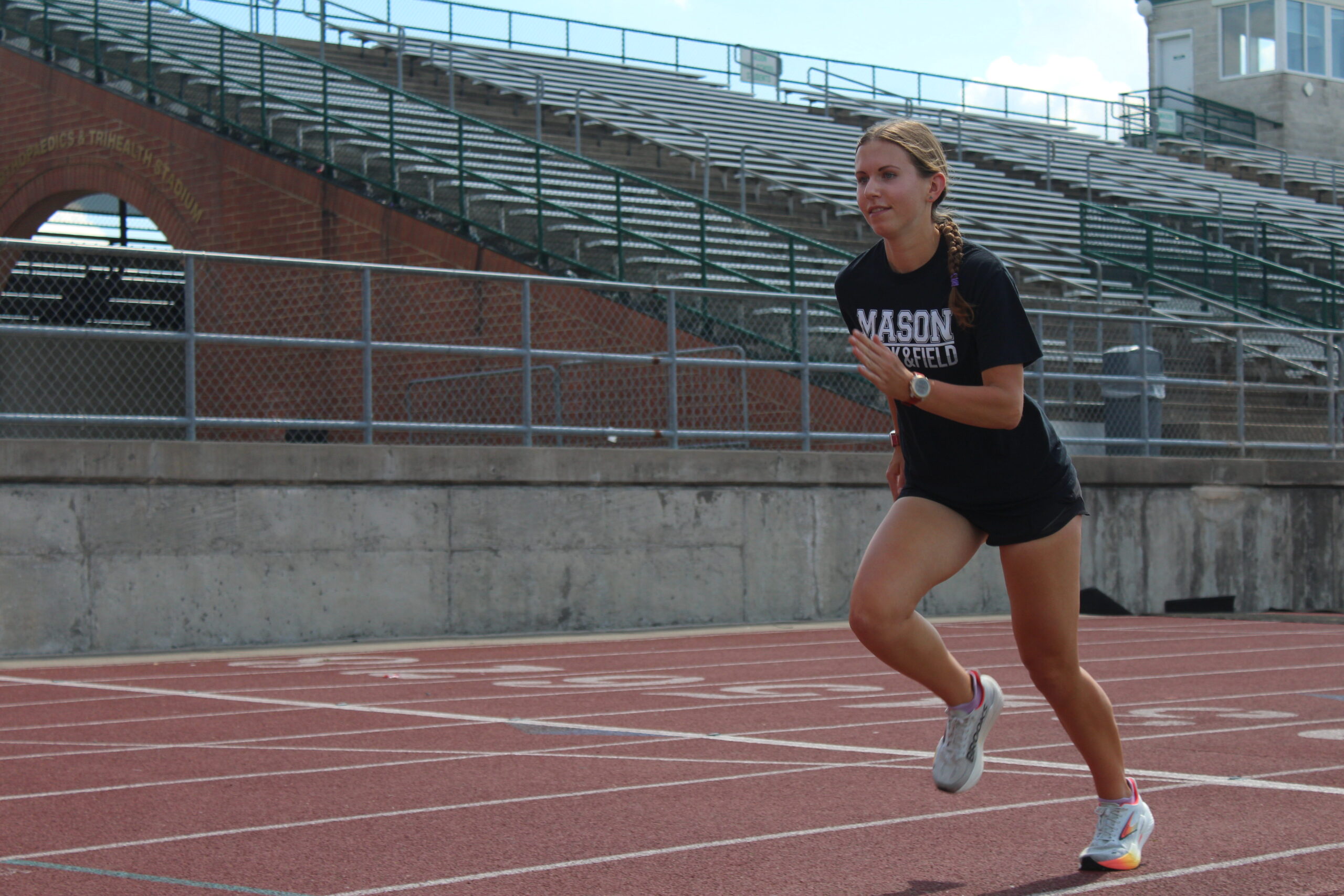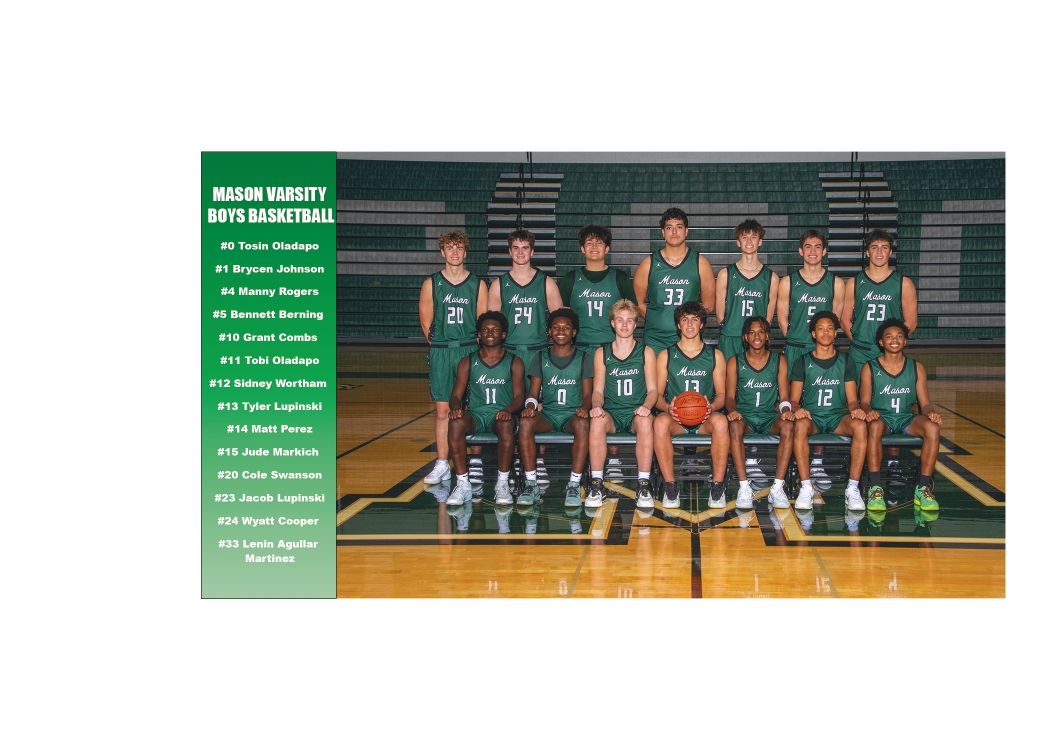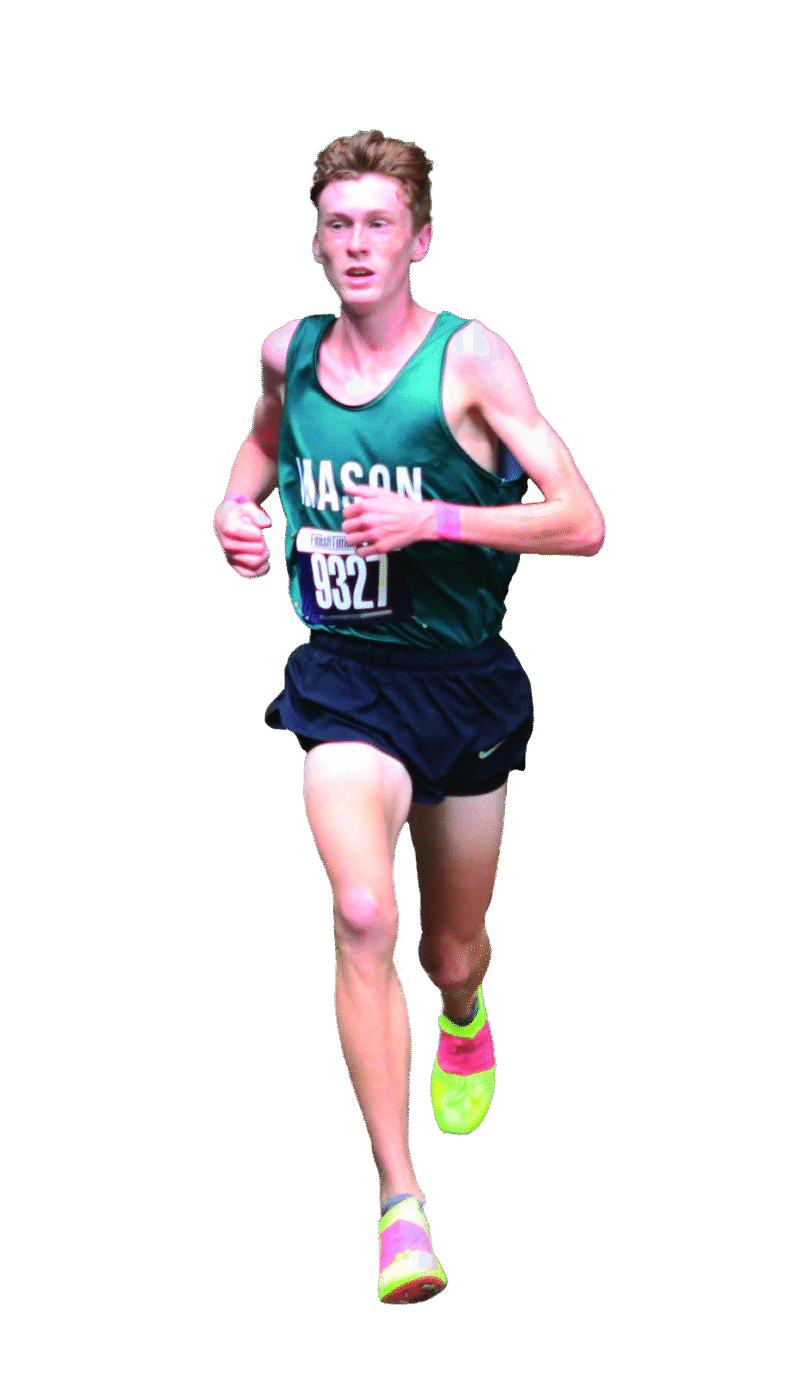Libby Pullen | The Chronicle
Countless medals, endless cheers and personalized highlight reels. Being a student-athlete often looks like a dream from the outside. But behind the constant praise lies late nights, early mornings, endless practices and the constant pressure to perform. Characterized by physical and emotional exhaustion as well as a loss of motivation, burnout is becoming increasingly common among teenage athletes as they balance grueling practice schedules with academic and social pressures. For these athletes, the sport that once brought joy and purpose can begin to feel like a burden.
Senior Efa Paschka began her high school career as a top-placing track and cross country athlete, running with the Mason High School (MHS) varsity team in eighth grade. Hitting Personal Records of 12 minutes and 47 seconds for two miles in eighth grade and holding the MHS record for fastest time for the 5000 meters with 17.30 seconds, Paschka was a key factor in the success of the MHS Girls Track and Cross Country teams for her entire career. But now, she finds herself taking a break from the sport she once dominated.

Senior Efa Paschka goes for a recreational run outside of her cross-training schedule on her home track at Dwire Field to maintain fitness.
“Honestly, this past track season I was running times that were really bad for me,” Paschka said. “And once my blood work came back, [it became clear that] there was no point in trying to do this [anymore].”
Paschka’s blood work results showed her to have anemia, which is a deficiency of red blood cells or hemoglobin in the blood. Anemia has severe limitations on athletes, often leading to setbacks due to reduced performance, increased fatigue and impaired oxygen transport to muscles. The effect of health concerns, such as anemia, can be an added stressor to the intensity of sports involvement and eventually, a significant factor in athlete burnout.
For many athletes, their sport begins as a way to make friends and enjoy themselves through an athletic passion. But over time, practices become more intense, expectations reach new heights, and what once served as an outlet can turn into a source of stress and obligation.
“I hoped joining the team would be an easy, fun way to make friends,” Paschka said. “I really just enjoy running. So, getting to do it every day and also getting to spend time with my friends was always very fun.”
For Paschka, running evolved from a way to connect with friends into a true passion, and eventually, a demanding commitment. With intense practice commitment and high expectations for the team, the stress of perfection started to outweigh the benefits of running with her friends.
“Practice would go from about 2:45 to 5:30, every day,” Paschka said. “We would run for about 40 to 70 minutes, lift twice a week and have meets on the weekends. So it was a major time commitment.”
On top of performing at the highest level at all times, athletes feel the weight of their commitments infringing on their time. For Paschka, running did not stop when the seasons changed. With cross country in the fall season, pre-season training for track in the winter, and indoor and outdoor track seasons during the spring, she found herself becoming consumed by the sport she once loved. Suddenly, striving for improvement became negative self-reflection.
“I gradually started to wish I was performing even better,” Paschka said. “[I was always thinking of] what ways I could perform even better, thinking maybe I could find a way to be tougher, work more, and get better.”
The pressure to be the best, all the time, is something student-athletes carry silently ‒ and when they don’t know how to manage it, burnout and exhaustion can quickly follow. Yet, what some see as a setback can become an opportunity to rebuild, recover, and grow stronger.
“The biggest thing for me has been cross-training, so that when I start running again, I’m ready and stronger,” Paschka said.
Cross-training is a method many athletes use, spending time in the gym doing activities other than their primary sport to maintain their physical condition while they are away. Setbacks can remind athletes that they are more than their sport, and that growth often comes from taking a step back. During her break from structured running, Paschka has found new ways to channel her energy and creativity. While she remains busy with senior activities, college applications and recreational training, she has directed her free time to her artistic passions, including ceramics and origami.
“I have been doing art for years, and I have always had to balance my schedule to make sure I give enough priority to school, sports and art,” Paschka said. “But it has been nice to have more control over my schedule this year without [the practice schedule], and that flexibility definitely helps me balance my priorities.”
In her free time, Paschka has mastered numerous origami patterns and even designed many of her own. Beyond her accomplishments as a decorated runner, she has earned one Silver Key and seven honorable mentions at the 2024 Regional Scholastic Art Show, as well as an honorable mention at the 2024 National Ceramic Exhibition Foundation Art Show.
Paschka is proof that taking a step back from athletics doesn’t mean pausing growth. It can be an opportunity to explore new skills, recharge mentally and physically and build a stronger foundation for success in the future.
“I have learned so much from this break, and I’m honestly so grateful for it,” Paschka said.“I want to get that base level knowledge to really understand how these physiological processes work, so I can [come back] better and stronger, and truly optimize my performance by working smarter, not harder.”
Paschka’s “step back” from running highlights the importance of prioritizing mental and physical well-being for athletes. When your body is healthy, your mind can be healthy and having balanced mental and physical health is the key to maintaining high performance as an athlete.
“I have learned so much and still have so much to learn,” Paschka said.“The idea of exploring this has been very gratifying. It has been an important factor in [being able to] take that negative spiral and find ways to implement things that will make it positive, so I can start to build back up, adapt and improve.”






